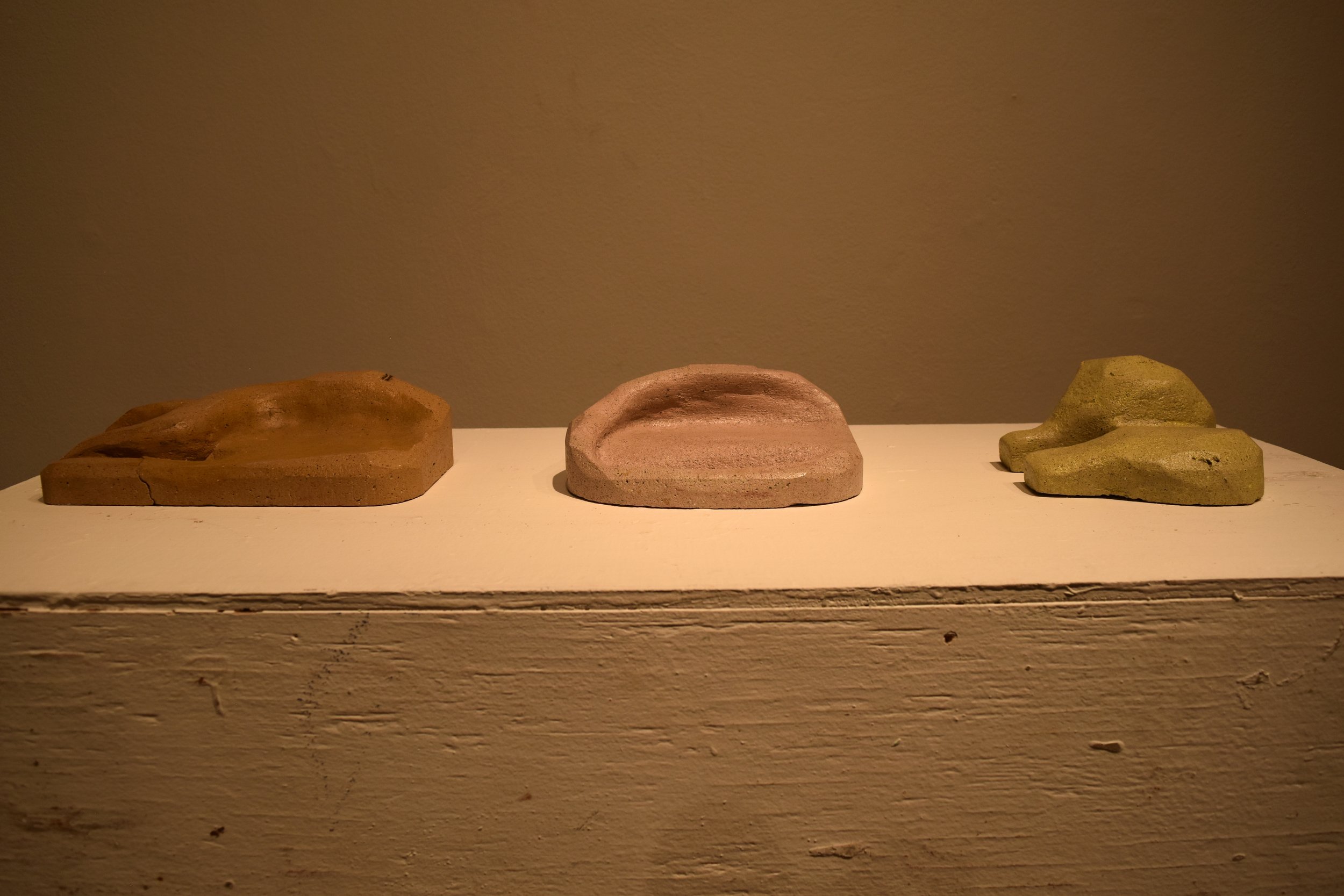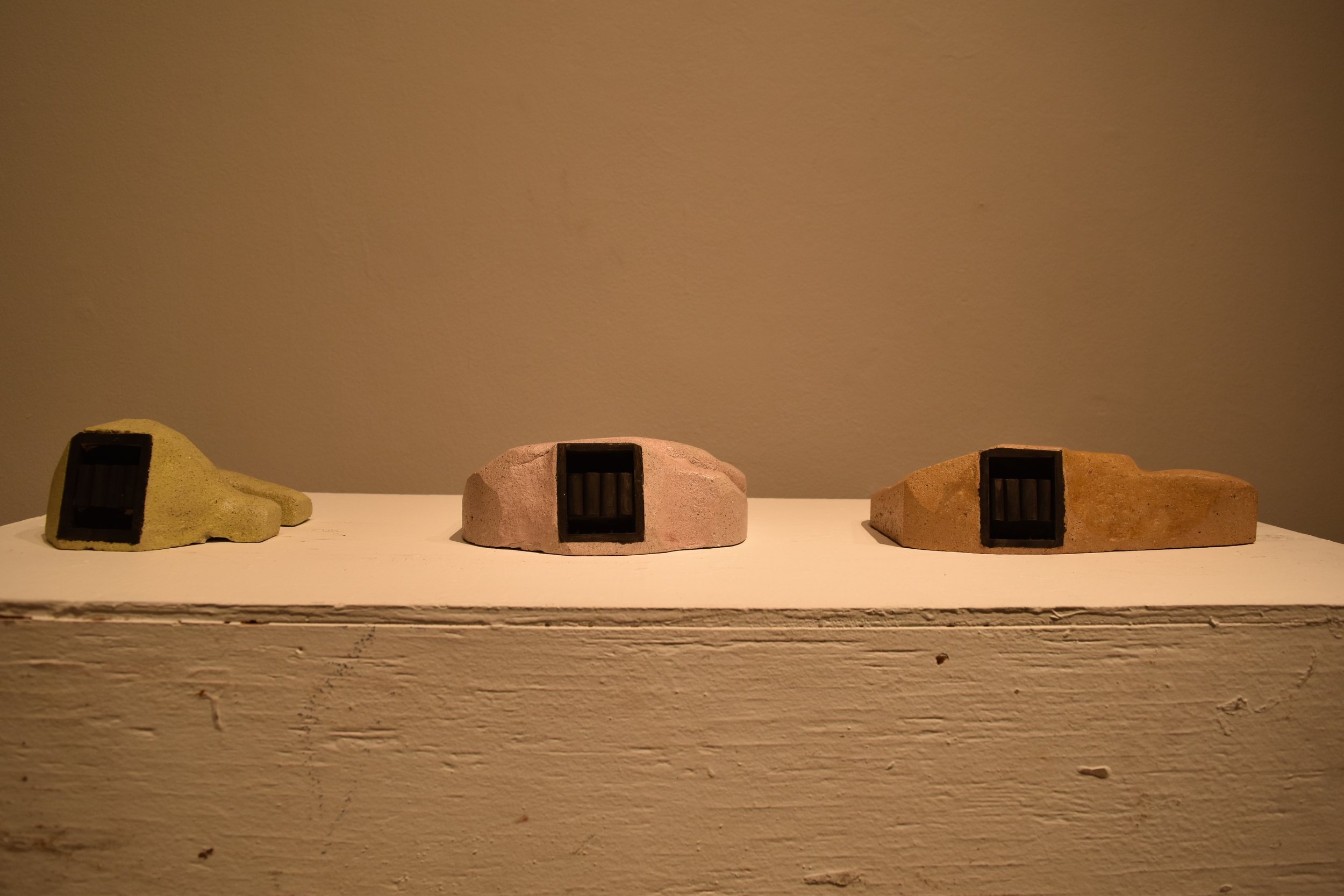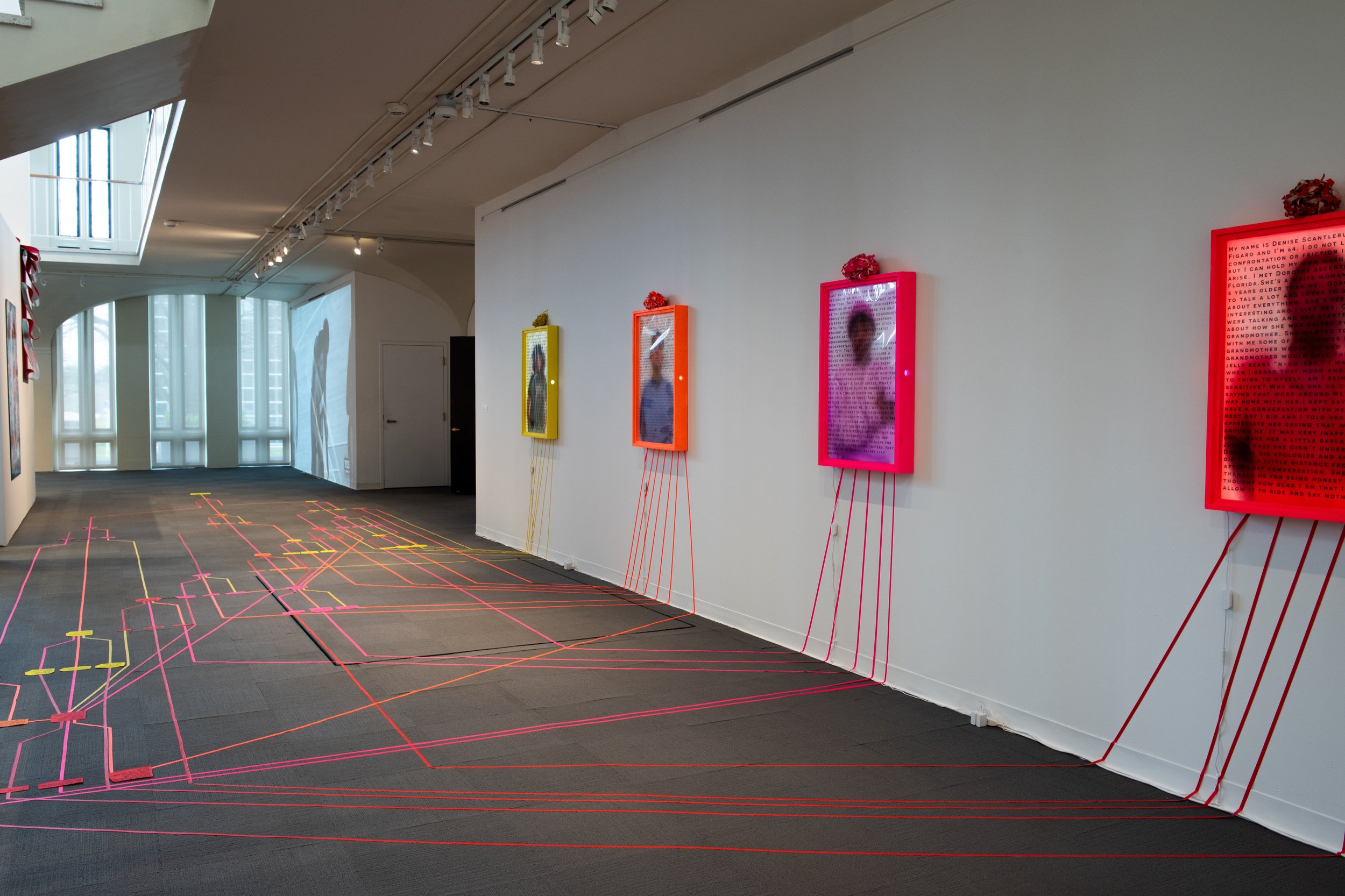
University Art Museum, 2024

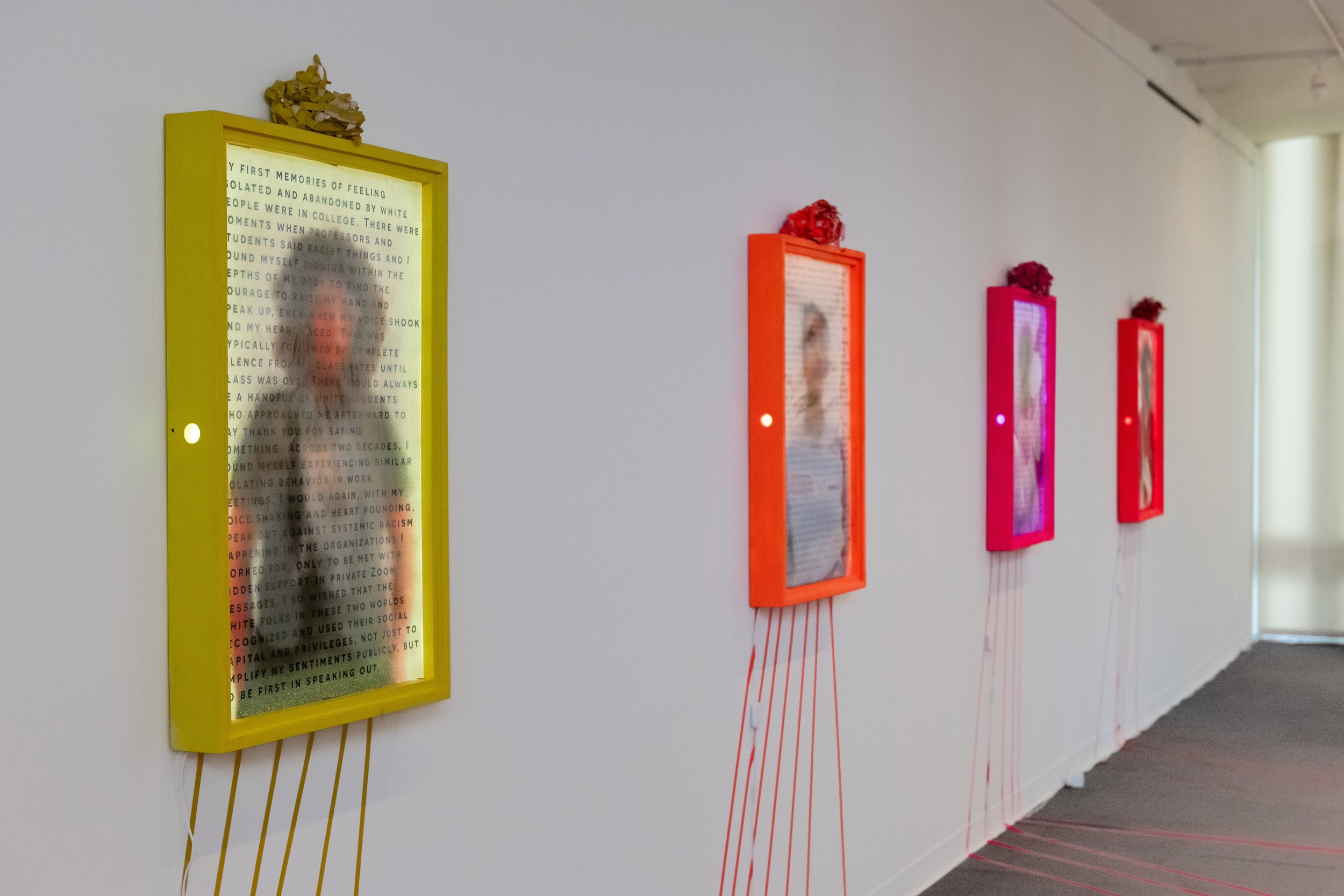

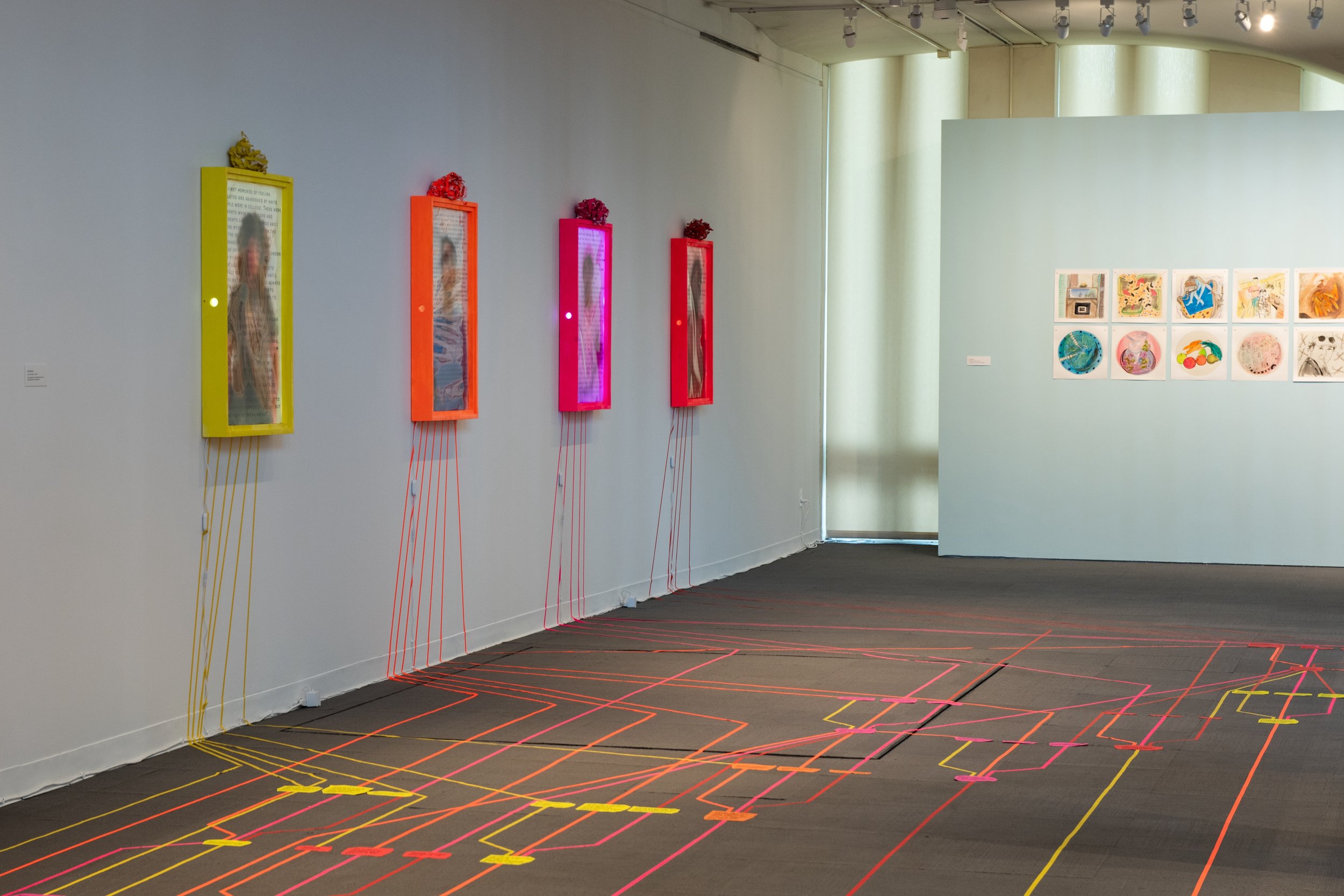
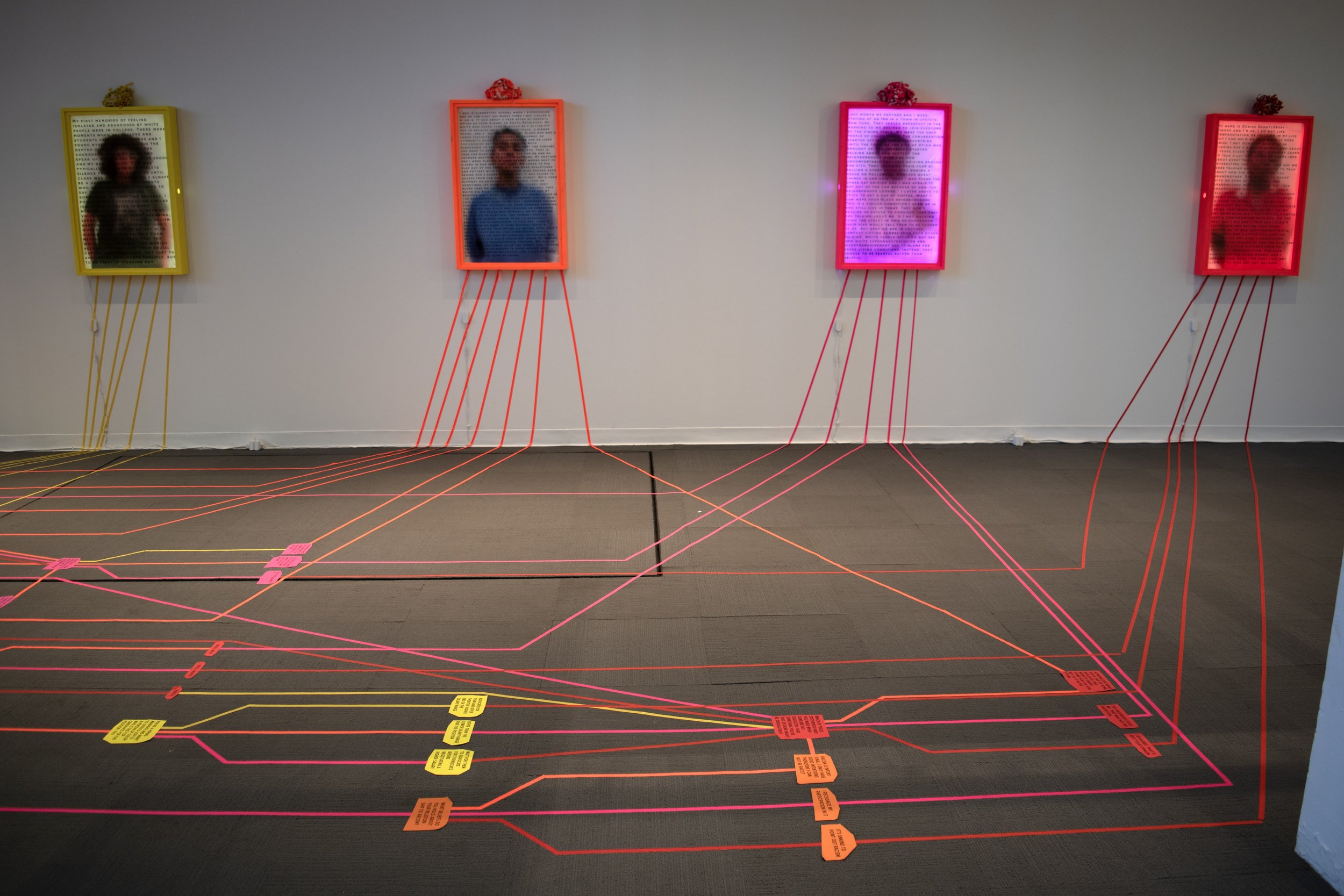

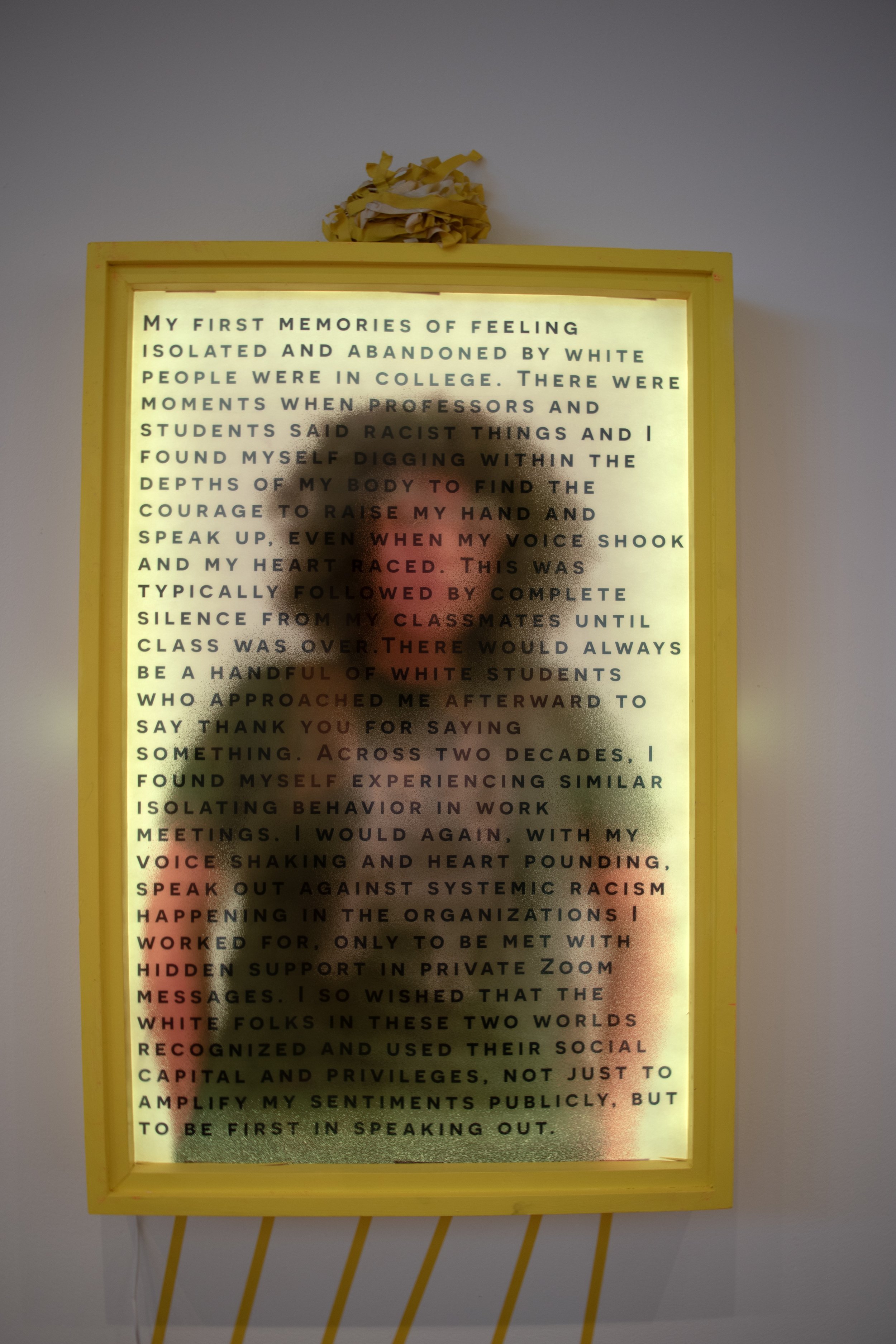
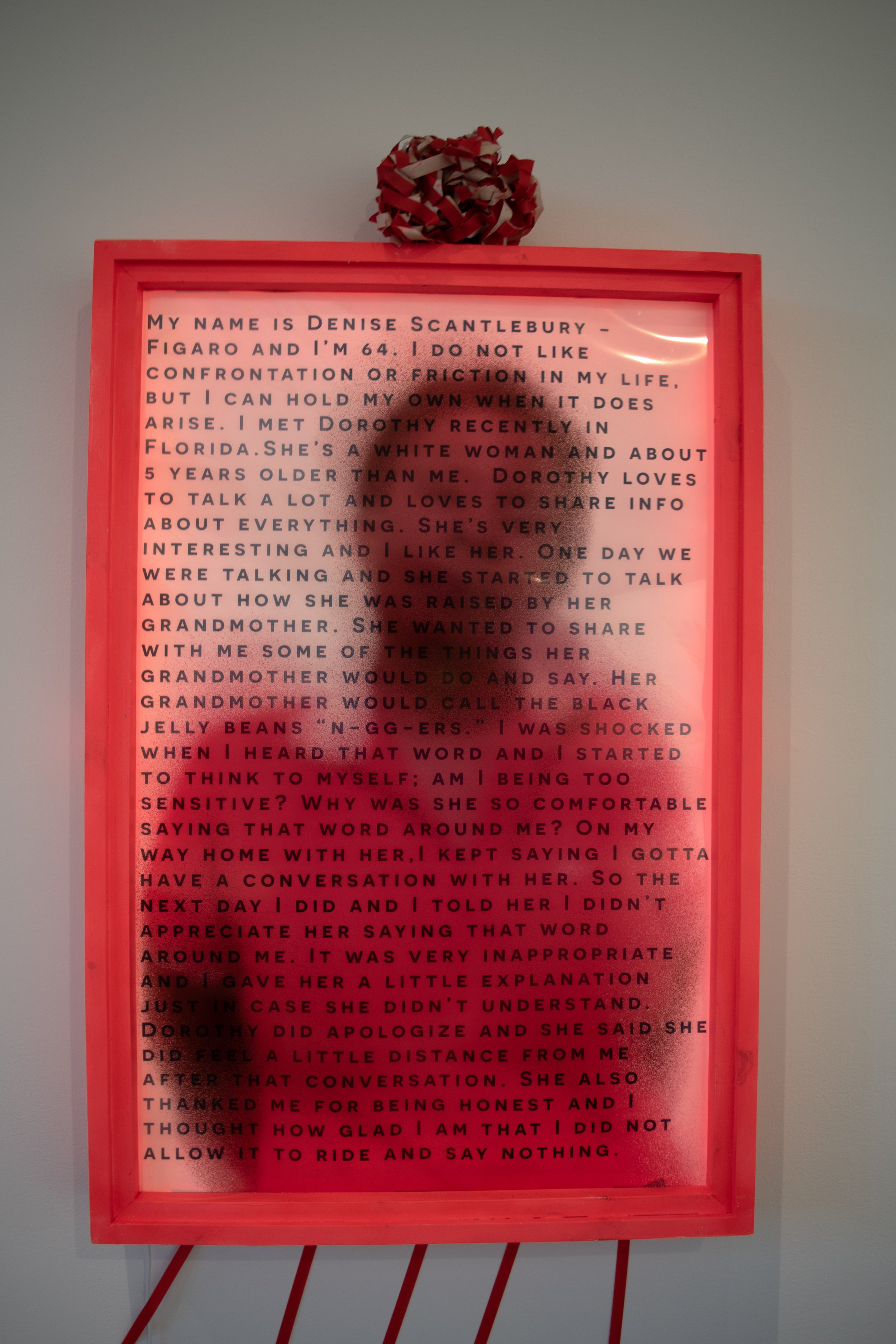
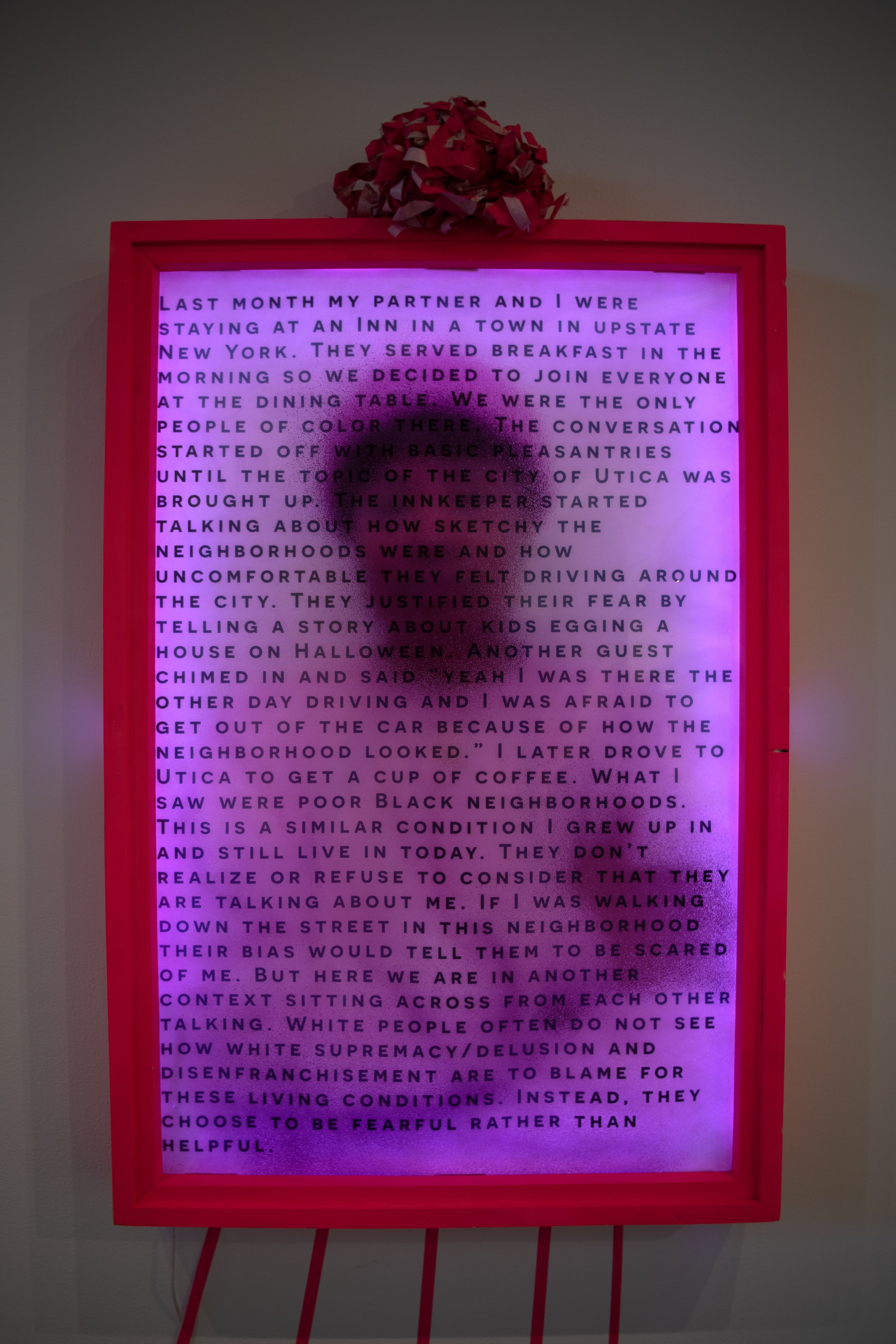
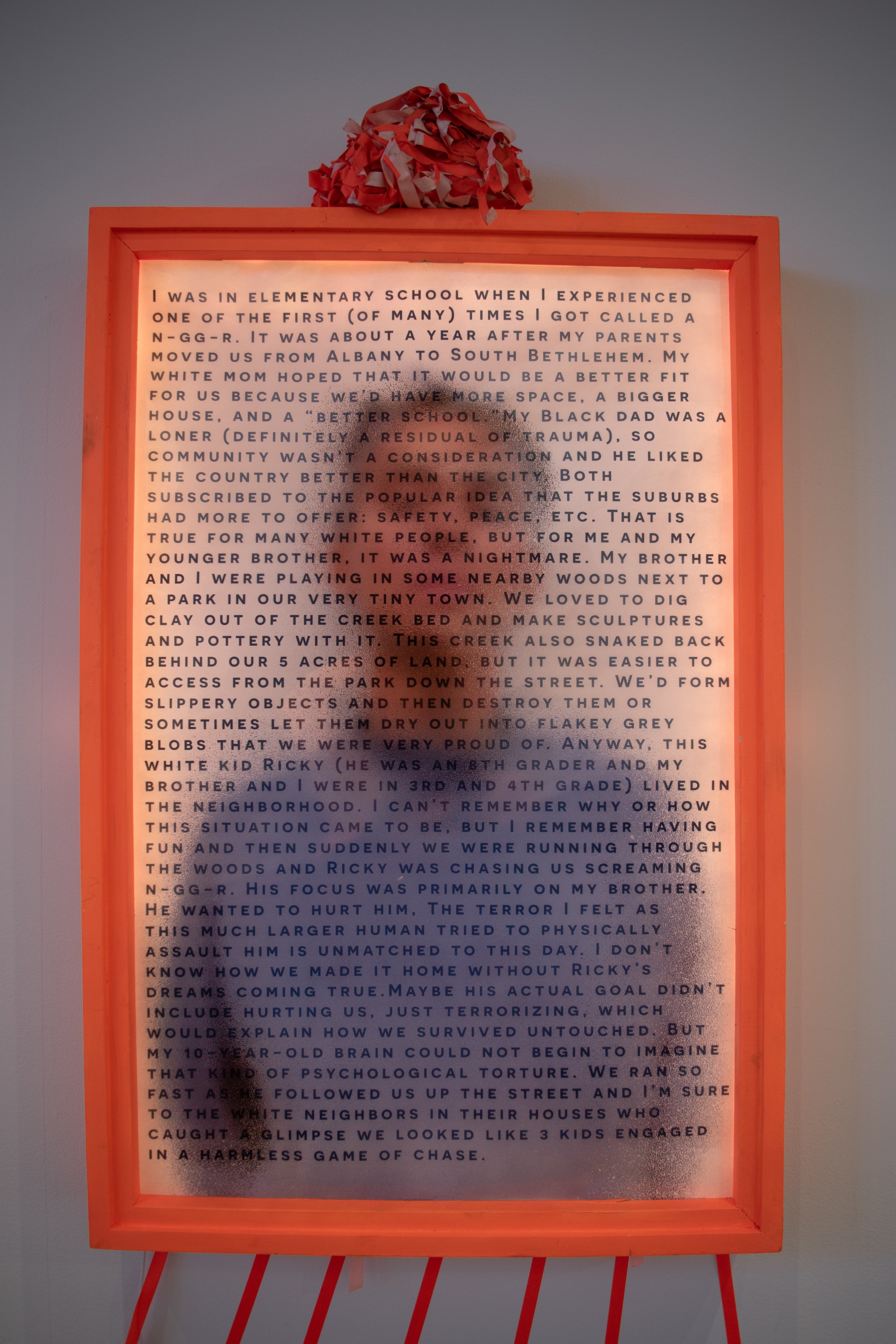


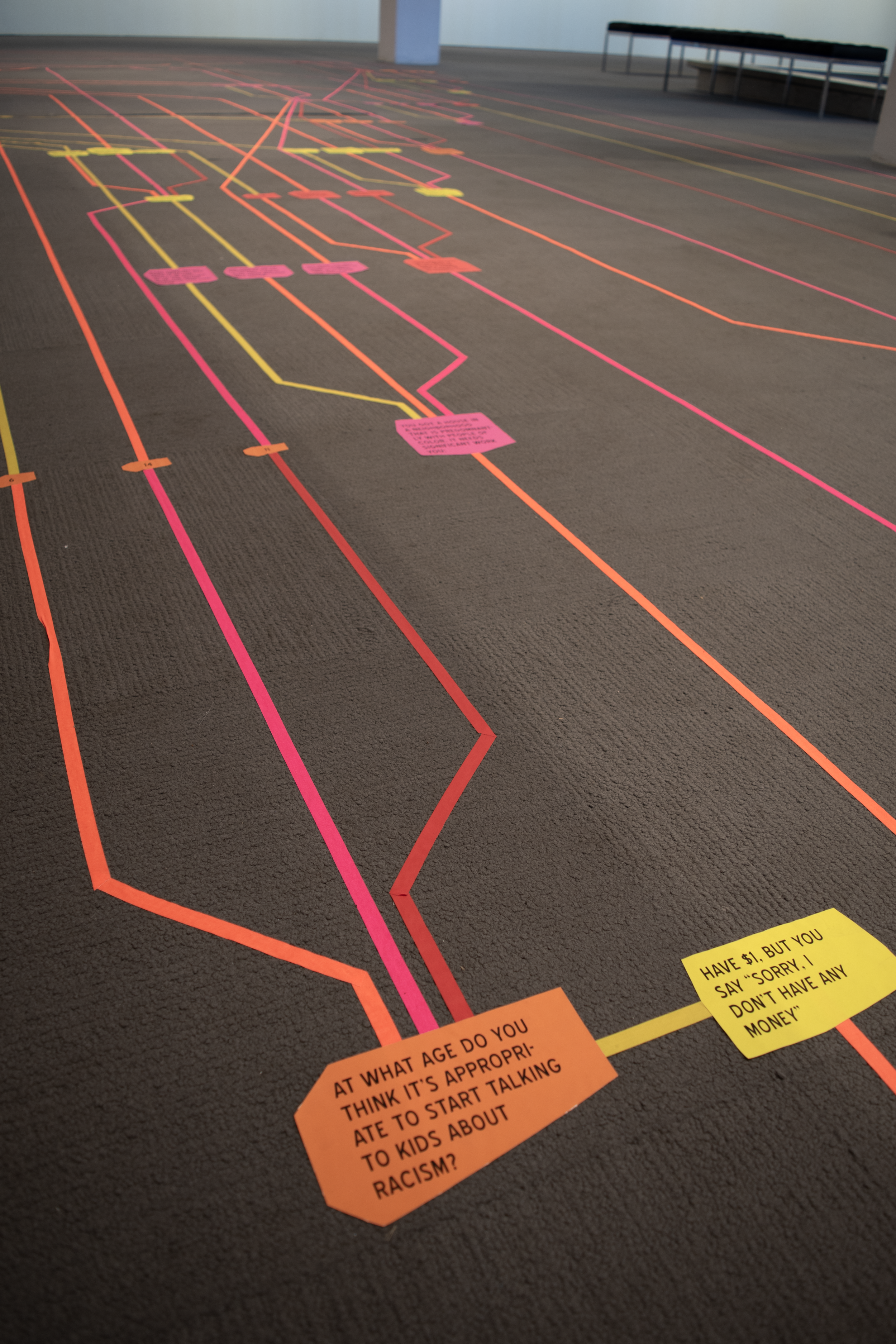
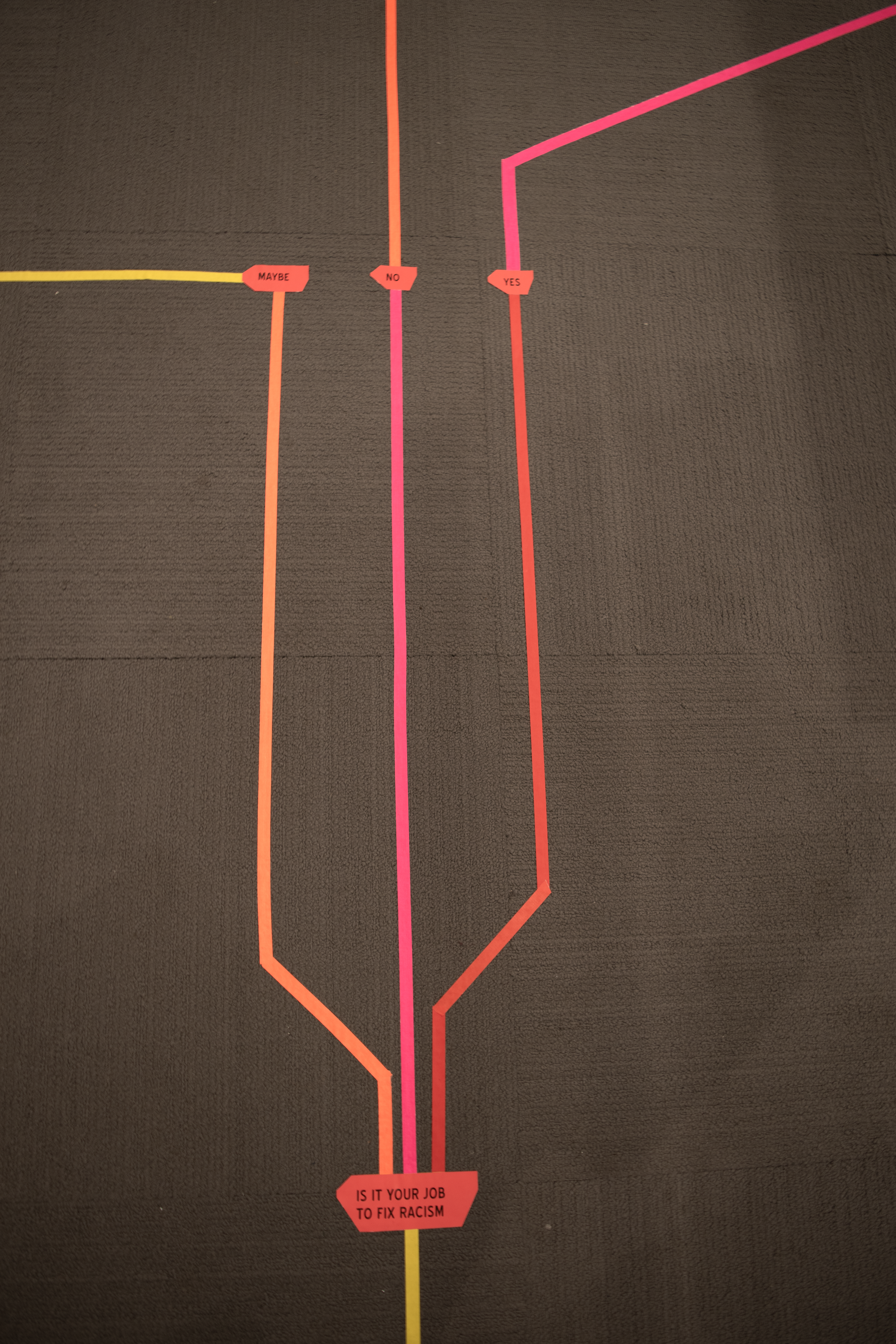

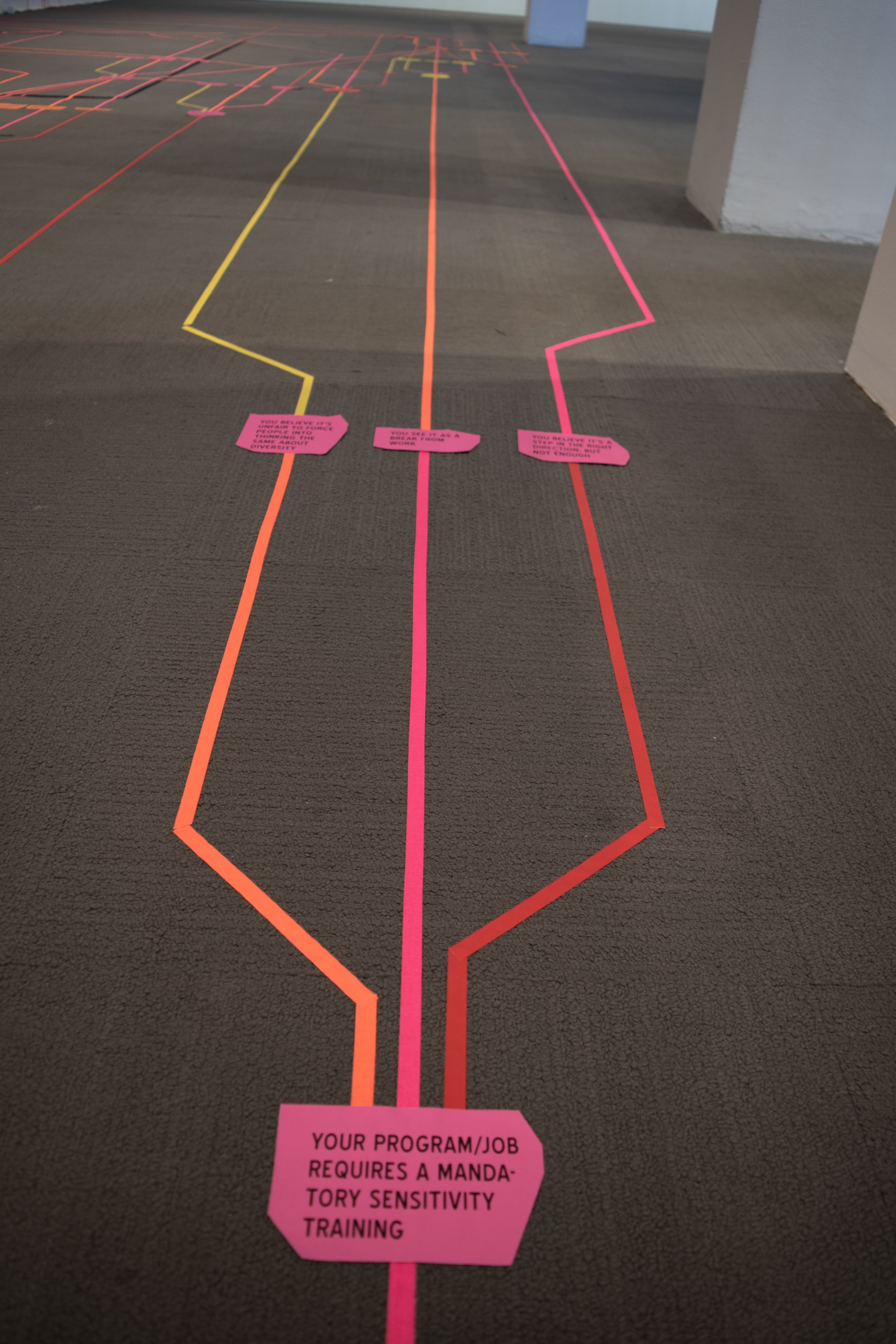
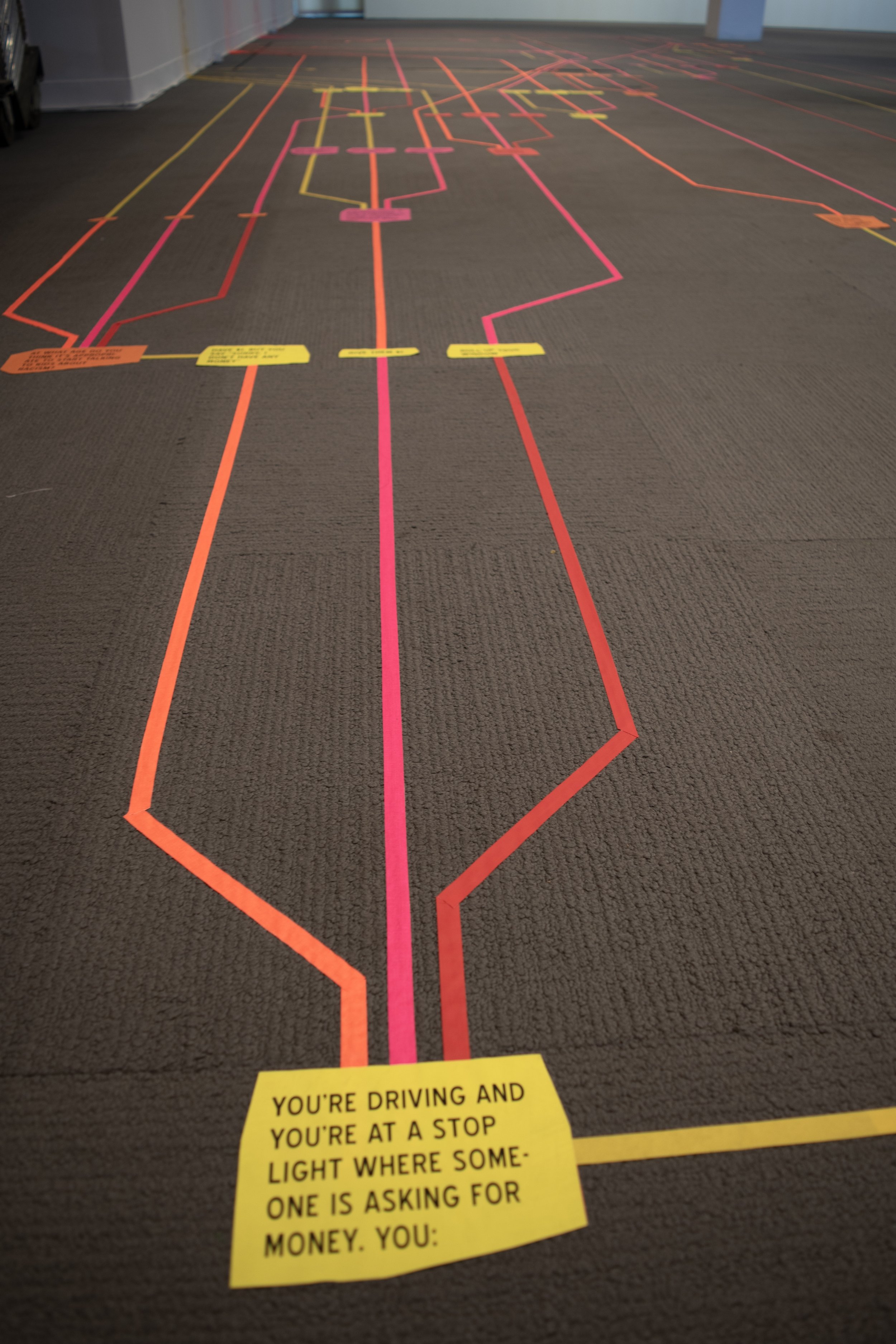
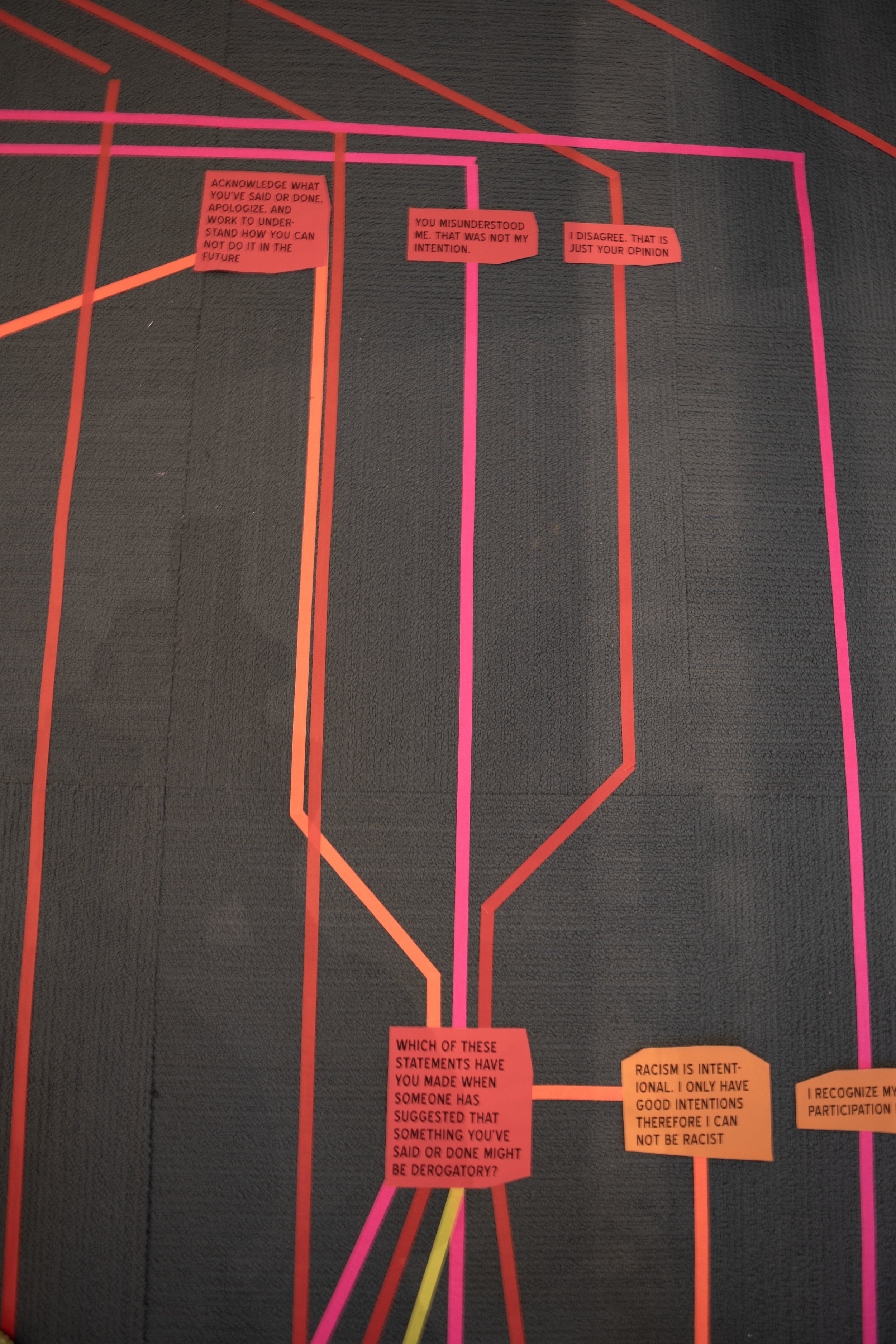

-
Let’s Call It What It Is, an immersive installation that poses questions and interventions to help us understand how people continue to perpetuate ideologies of white supremacy/delusion through everyday conversations. Participants are asked to investigate themselves and uncover their internal truths. Utilizing a “choose your own adventure” format the participant is asked to follow a path based on their answers to a series of multiple-choice questions. The path is laid out using fluorescent gaffer tape into a gridlike form that functions as an analog algorithm. The work depicts how I am the operator, the installation is the machine and the physical output is the audience interaction. As opposed to a computer algorithm making the decisions, the physical movement of the viewer is guided by their own logic.
At the end of the path, the participant encounters a portrait and a personal story that relates to one of the questions. The prompts center on the concept of allyship, with the final result creating opportunities for participants to emotionally connect via portraits and personal accounts of racism. It focuses on interpersonal and intercultural dynamics of race and class. Often white, economically advantaged, cis heterosexual, and/or able-bodied people do not recognize their own privilege and complicity in perpetuating the ideologies of previous centuries. This project sparks potentially uncomfortable internal dialogues for participants because it unearths our truths versus the delusions we want to believe about ourselves. Sitting in discomfort is necessary for genuine change.
The installation is both a presentation of research from the lived experience of people of color and a project designed to gather evidence. When approaching the installation it can almost read as a game. This quote from Steyerl best represents its relationship to play, “ You should not dismiss games or video games at all because most people think they are unreal or just pure fiction or distortions of reality. The contrary of all of that is true. Games are reality. Games are new technologies of the government of trying to compute and manage populations.”
-
Let Us Keep You Warm #2 is an interactive sculpture that utilizes sustainable building practices and recycled materials to generate and emit heat. The concept and the design originally stem from my experience with NYC winters huddling with friends as a way to survive waiting for the bus. Since its inception the focus has expanded to consider the lack of warmth in outdoor public spaces at large. This project both provides a solution to deal with waste materials and a source of heat that reduces our carbon footprint. While this piece can be enjoyed by all, its existence is specifically directed toward supporting people who need outdoor warmth the most: those without homes and those who are more vulnerable to the elements, such as people with underlying health conditions and children. Let Us Keep You Warm #2 is a public art piece rooted in the principles of social practice and specifically addresses a need: free heat. It is not coincidental that most cities and towns do not provide heating stations at bus stops, parks, among other public locations. City government and public officials do not want people without homes to congregate in these areas. Most localities want to deny people without homes this resource and as a result all citizens suffer. A few cities have decided to provide this resource, such as Toronto and St. Paul. This sculpture provides an example of how to do it sustainably and economically. Let Us Keep You Warm #2 is in opposition to the hostile architecture that is implemented throughout the cites to deter loitering. In response I’ve coined the term conducive architecture to describe designs that address a need that aids people rather than designs that purposely restrict the behavior of the poor, people without homes and youth. As a teenager I utilized drop in centers in NYC, such as Hedrick Martin and The Door, where I saw first hand the disproportionate rate in which LGBTQ adolescents were affected by homelessness. The purpose of this public piece falls in line with the core of my practice; to produce life-size structures and sculptures that serve as sanctuaries, protectors, and symbols of empowerment for BIPOC LGBTQ folks.
Huddling is a simple act, but it’s a powerful social thermoregulatory behavior commonly used by mammals to reduce heat loss and energy expenditure in the cold. The images above are moquette versions of the proposed project. The figures in the sculpture mimic this in abstract form representing two people cuddling in a lying position. I’m open to changing the forms and dimensions to fit the location. The materials that will be used for this project are concrete, radiant floor tubing, recycled soda cans, solar fans, and plexiglass. The last image shows the back of the piece, which are cans that will be stacked within the frames and then backed with plexiglass to create an environment that will capture the heat generated inside of them. The temperature of the air can reach up to 150 degrees. Solar fans will be used to blow the heat into the tubes, which will warm the concrete. This sculpture will present the impact of combining close physical proximity and thermal energy.


